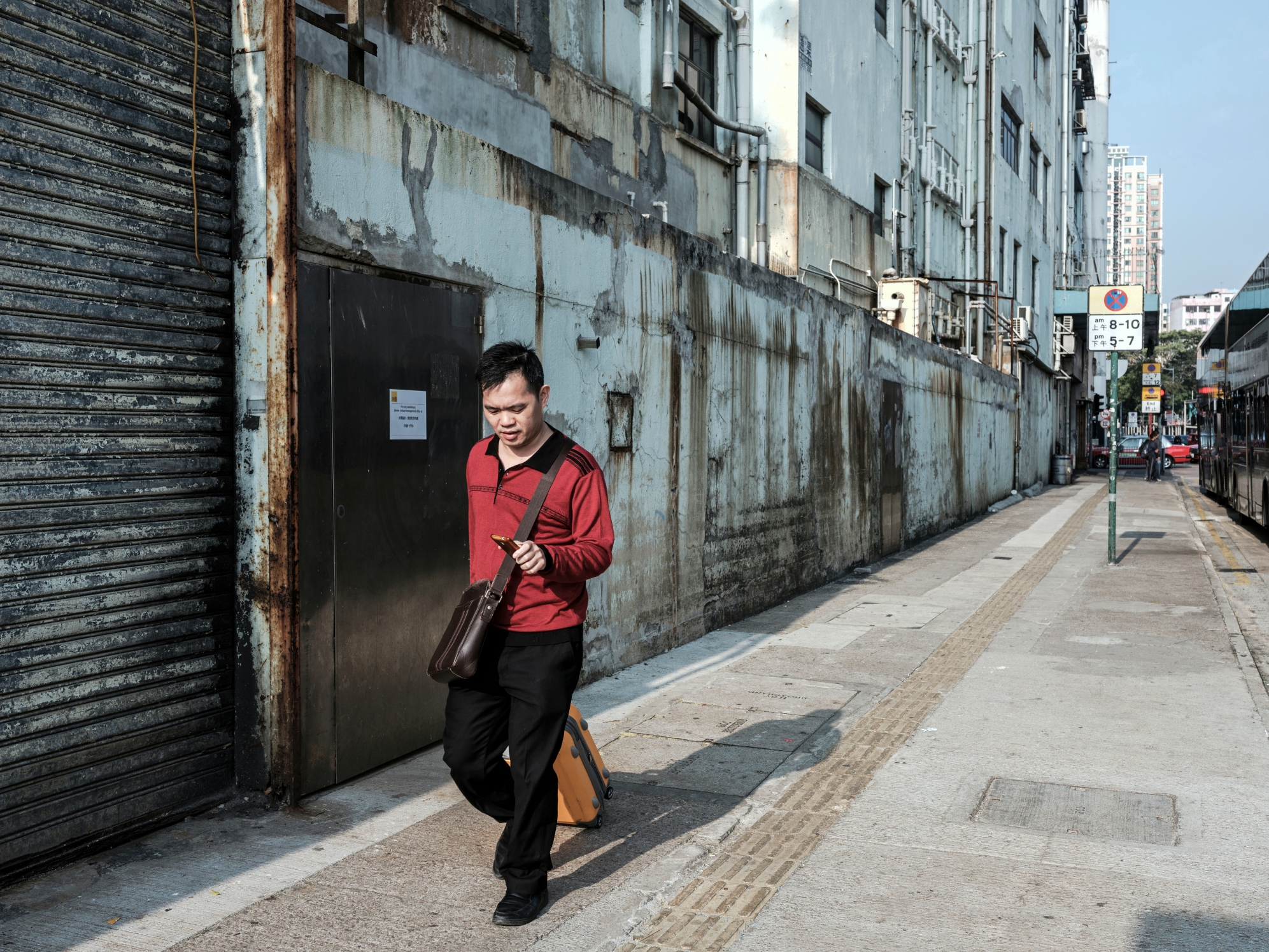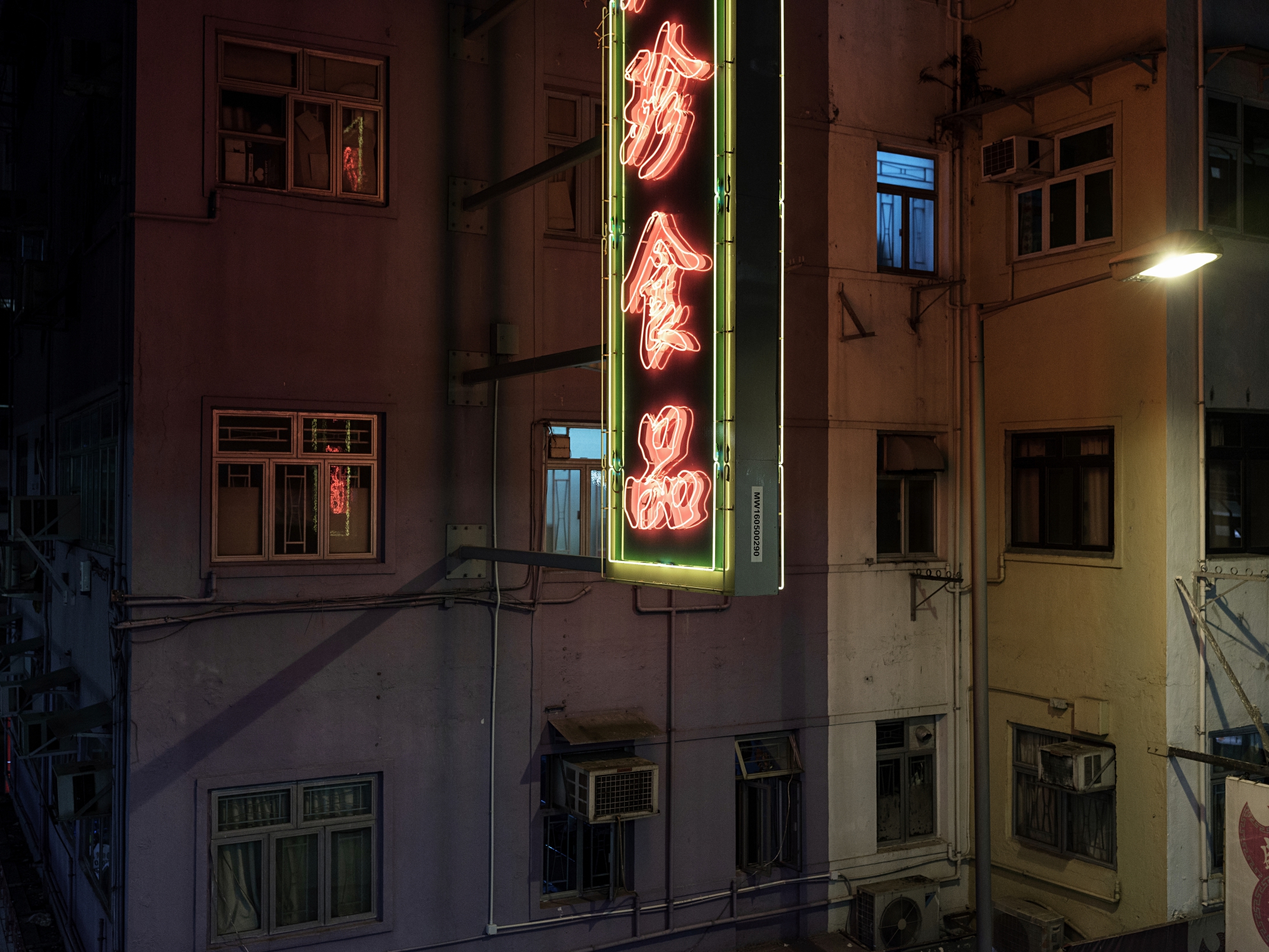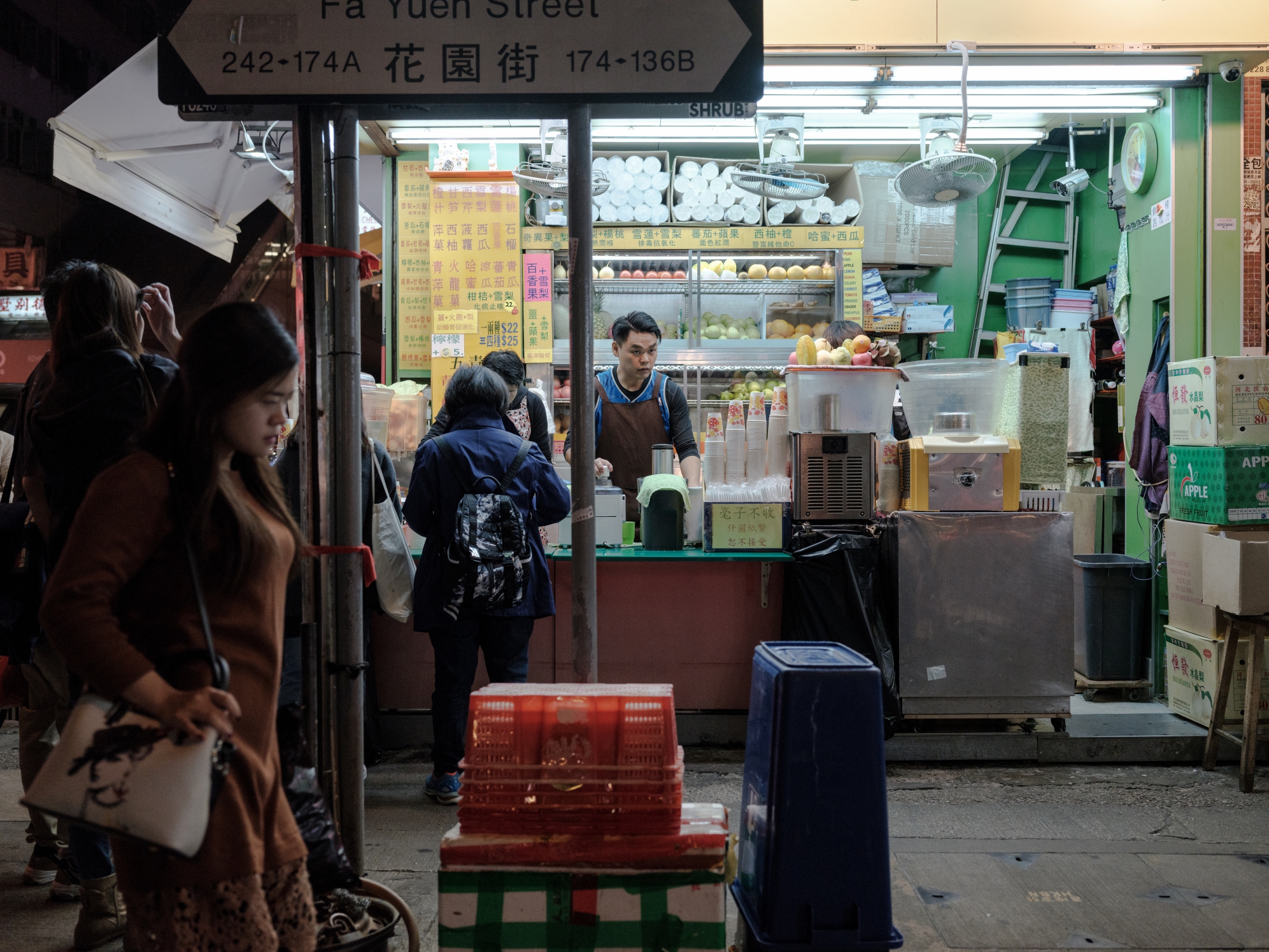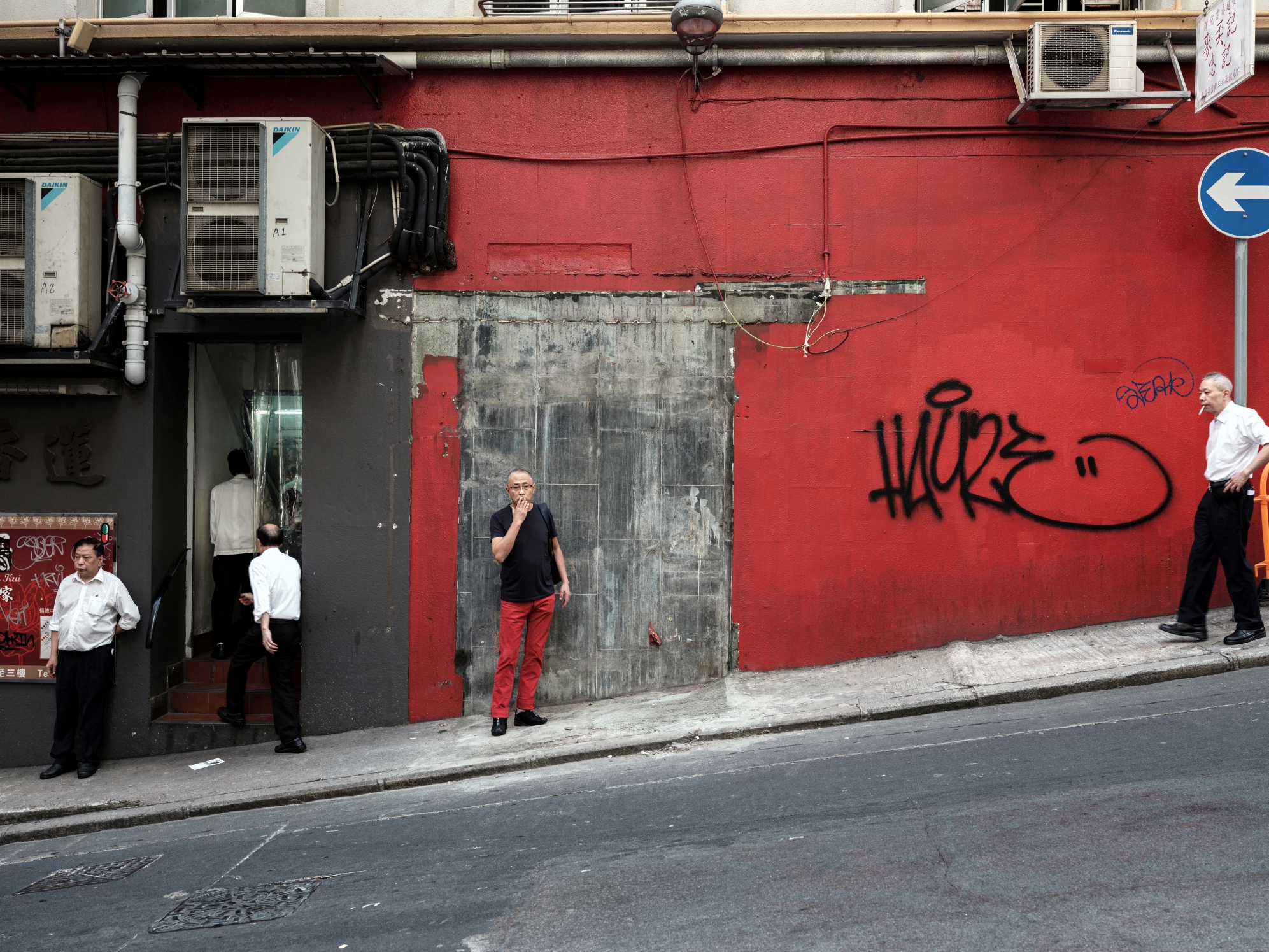This article was supposed to be a playful comparison between the new X-E3 and the GFX 50S as a travel photography and street photography camera. I still might write an article about my experiences with both of these cameras in Hong Kong in the near future. However, after looking through the images taken with the GFX 50S and the new GF 45mm f/2.8 R WR lens (35mm equivalent), I was thoroughly impressed and decided to focus on the GFX instead.
Imagine being able to take beautiful street photography images but with the resolution of a professional studio camera? I’m not a pixel peeper, but you just can’t help it when shooting with this camera. I could crop 80% of the image, and still be blown away by it’s resolving power. Although I call the GFX a studio camera, this is only half true. Since the body and every lens is WR (weather resistant), this camera is a ruggedly built camera that can be used out in the field for all weather conditions. Coupled with the new GF 45mm lens, I used the GFX like I would the X100F, as an EDC all scenario camera. Did it work? It did in my hands, but would I recommend it to the average photographer? It depends what your priorities are. Let’s look at the results and my experiences with it in Hong Kong, and I’ll let you decide.
The first thing I’ll say is that size and weight is relative. If you’re coming from a mirrorless system, the GFX 50S with the GF 45mm lens would be considered large and heavy (1409 g with body, lens, EVF, cards and battery). However, if you’re currently shooting with the top end DSLRs from Nikon and Canon, the GFX system is on par in terms of size and weight. I also brought with me a full film SLR system (Minolta 9xi and 35mm f/1.4), and I can say that although my film camera was more compact, the weight was very similar. Many of my film camera nerd friends also love to drag around their vintage film SLRs and medium format cameras, and I can tell you that these things can be bigger and heavier than the GFX 50S. In comparison to it’s peers, the GFX is average in size and weight, except when compared to the Hasselblad X1d-50C. The Hassey’s form factor is more like the X100F or any of the classic Fujifilm film rangefinder medium format cameras. I hope that Fujifilm will make a rangefinder version of the GFX-50S, even if it’s not an ILC system.
As mentioned in my previous articles on the GFX-50S, the image quality of the 51.4MP sensor with the X-Processor Pro is stunning to say the least. Although the sensor has a Bayer colour filter array (not X-Trans randomized colour filter array), due to the physical size of the sensor (43.8 x 32.9mm) and a 14bit RAW file structure, the tonality, micro contrast and resolution of this camera is unbelievable, especially when shooting at lower ISO. High ISO performance is also really good, easily shooting at 6400 with well controlled noise (similar look to shooting ISO 1600 with the APS-C X-Trans sensor cameras). Much like a film camera, the sensor is only half the equation when it comes to IQ. You need good glass to properly resolve the image to allow the sensor to capture the focused light effectively, and the Fujinon lenses do not disappoint. I’ve tested every GF lens, and each one is top notch quality glass. Although focus by wire, the focus rings turn naturally with the right amount of resistance. For this article I shot exclusively with the new GF 45mm f/2.8 R WR in Hong Kong.
The GF 45mm lens with a 35mm equivalent focal length was a beautiful field of view to work with in Hong Kong. However, I’m not the biggest fan of the 4:3 aspect ratio, and had to adjust my shooting style to accommodate this. This lens is very similar in design to the more compact GF 63mm f/2.8 R WR. Unlike the other lenses in the line-up, the focus motor in both of these lenses is not LM (linear AF motor), so it’s noisier, slower and hunts when there’s not enough contrast (the GFX is contrast detect AF only). It reminds me of the first generation prime X series lenses ( XF14mm, XF23mm f/1.4, XF35mm f/1.4, etc.). Because of this inherent weakness in AF speed and accuracy, the best way to autofocus with the GFX is to put the camera in manual focus mode and use the back-focus button to trigger focus. This way, the focus distance does not reset every time you press the shutter button half way, especially when you’ve already established the distance you want to shoot at. This was the only way I could keep my street photos in sharp focus. Before you complain about this workaround, remember some of the greatest street photos in history were done on manual focus and manual exposure cameras. In addition, I’ve already compared the overall operational speed of the GFX against the X1D, and the Fujifilm is superior in every way (except for ergonomics).
Optically the GF 45mm lens is fantastic, even when it’s wide open. Even under extreme backlit situations, I never saw any weird artifacts or colour fringing issues. Although the XF23mm f/1.4, XF23mm f/2 and the X100’s 23mm f/2 lenses are for a different format, I still compared the overall performance of the GF 45mm against the other Fujinon lenses; and I have concluded this is the best performing 35mm equivalent lens that Fujifilm has made for the X series. From the closest focus to infinity, the lens is sharp, light fall off and distortion is minimal, and the rendering with the larger sensor really shows the resolving power of this lens. According to Fujifilm, these GF lenses have the ability to resolve up to 100MP sensors and beyond, so we have yet to see the full potential of these lenses. Moreover, this new GF 45mm is a keeper.
As initially premised, the GFX 50S is considered a professional studio and landscape camera. How I use the GFX system has been considered ludicrous by some (I get nasty comments in addition to well-meaning but condescending emails from ‘professional’ photographers telling me so). However, why let a label limit you with how you want to use this powerful image making tool? Yes the X-T2 will focus faster and more accurately, has better video features, it’s lighter and smaller, and has more than enough pixels to create amazing images. The same goes for the rest of the APS-C sensor X Series cameras. However, for those who have always wished that Fujifilm would create a full frame system, the GFX 50S is one notch better. Unless you are a full frame pro DSLR user with specialized needs (super telephoto lenses, blazing fast AF speed, etc.), the GFX 50S will give you better-than-full-frame images at a similar price point, size and weight (against top-of-the-line DSLRs). Like any camera system, the GFX camera has its quirks and weaknesses, and I think I’ve mentioned most of them in previous articles and videos. However, what you do get is an amazing camera with a powerful sensor and world class lenses. Fujifilm knows how to design medium format cameras and lenses. The GFX 50S with the GF 45mm f/2.8 R WR is a fantastic combination for travel photography, especially if you want to come back home with some of the highest resolved images you’ve ever taken. My only wish for the future is for Fujifilm to create an X100 version of the GFX with a fixed 35mm equivalent lens. Until then, this is the best way to get a digital medium format camera with a standard wide lens at a reasonable price from any manufacturer. Thanks for reading and happy shooting.
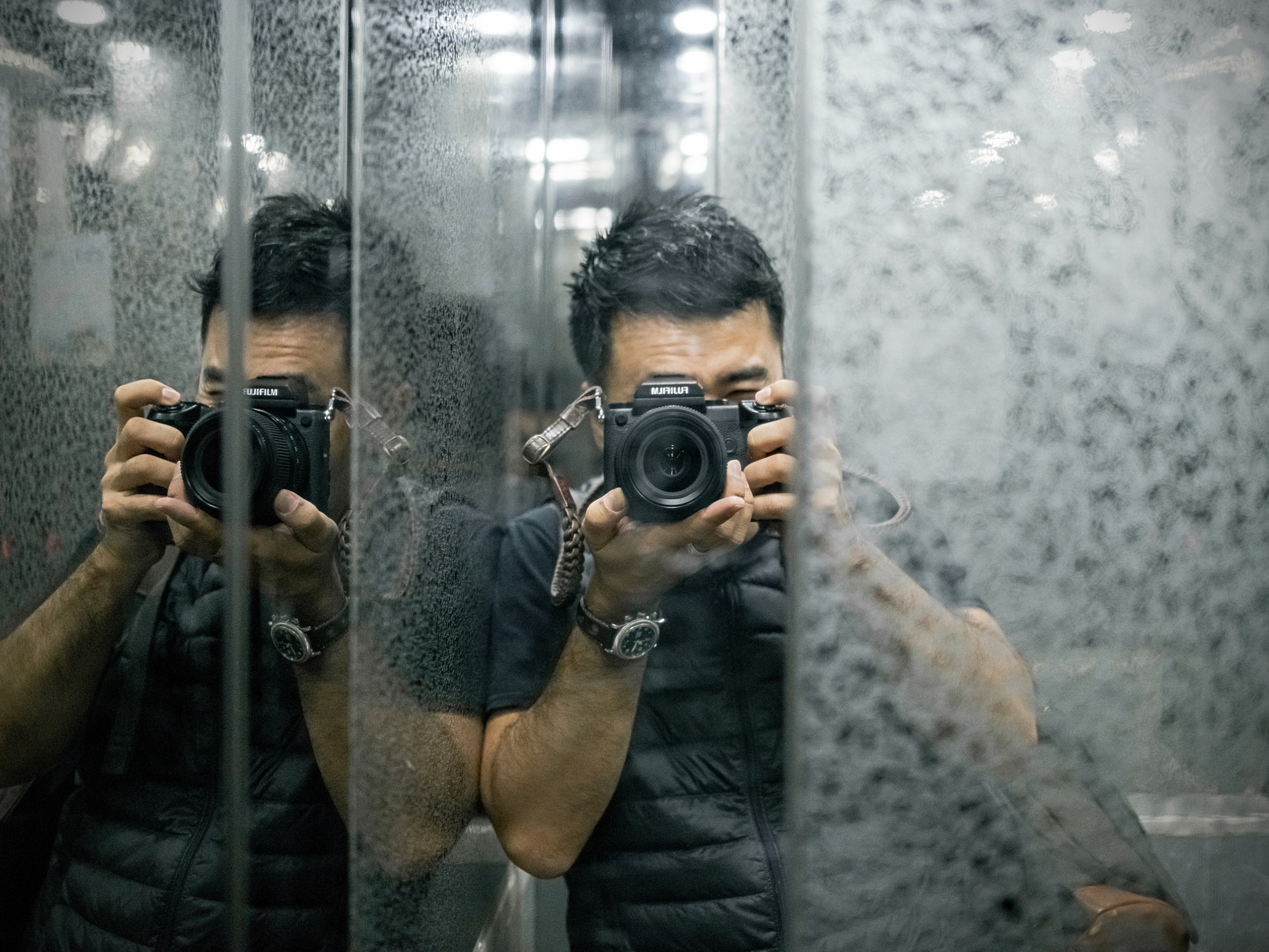
GFX 50S with GF 45mm f/2.8 R WR. 1/250th sec f/2.8 @ ISO 6400. Shown with Barton1972 Prime braided leather strap


